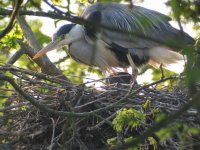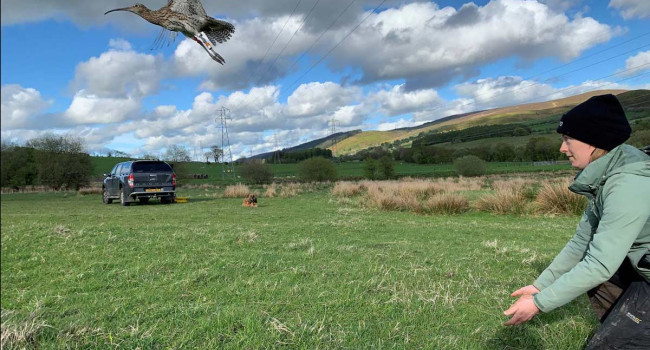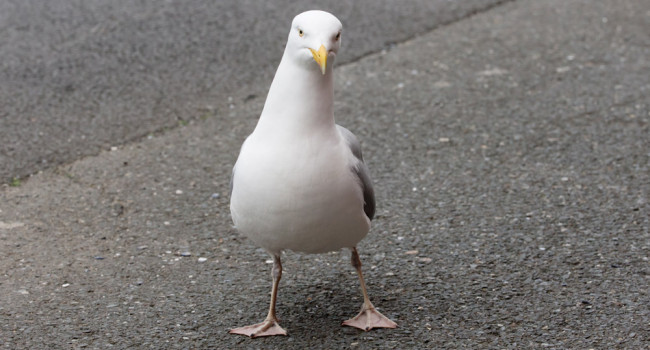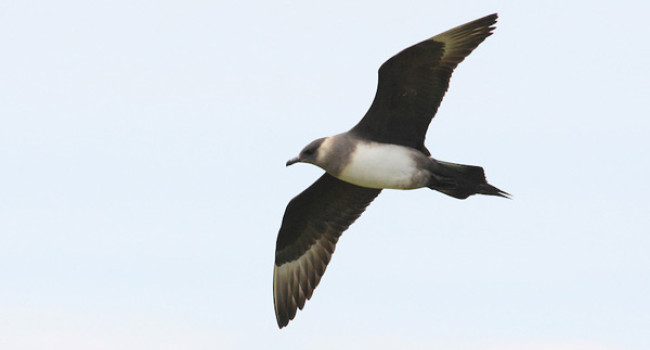BTO's longest-running census goes online
01 Jun 2015 | No. 2015-28
The Heronries Census, run by the British Trust for Ornithology (BTO), counted its first Grey Heron nest way back in 1928; 400,000 nests later it has gone digital.
The Heronries Census began in 1928 and has been in operation ever since. It collects annual counts of ‘apparently occupied nests’ in UK heronries and uses the data to monitor the population sizes of Grey Herons and Little Egrets. For the last 88 years, the Census has provided an annual estimate of the total UK breeding population of Grey Herons: this is the longest series of such data for any bird species in the world!
Counts are made at heronries by the BTO’s volunteers. It is one of the simplest surveys and requires no special skills. Until now, most counts have been mailed to BTO on special cards but, from 25 June, the option of direct online input of data became available to our observers for the first time.
John Marchant, National Organiser of the Heronries Census for the BTO, for the last 22 years, said, “Going online is the most important development in the long history of the Heronries Census. It will make it easier for existing volunteers to contribute and will open the scheme up for members of the public to report new nesting sites for herons and enter casual counts of nests apparently occupied. We hope in due course to expand the concept to cover more species that habitually nest in colonies, such as Rooks and inland nesting Cormorants.”
Online data input is now available for all of the BTO’s major surveys, alongside the submission of paper forms. The online option has quickly become mainstream for other surveys and we expect a rapid take-up for the Heronries Census, too.
The long-term information shows a general increase in numbers, though there has been a strong downturn since 2001, perhaps due to recent cold winter weather and the increasing frequency of spring gales. The most striking feature in the trend over the last 88 years is the effects of harsh winters which leads to high mortality rates and a clear dip in the population levels.
Notes for Editors
- The BTO is the UK's leading bird research charity. A growing membership and up to 60,000 volunteer birdwatchers contribute to the BTO's surveys, collecting information that underpins conservation action in the UK. The BTO maintains a staff of 100 at its offices in Thetford, Stirling, Bangor (Wales) and Bangor (Northern Ireland), who analyse and publicise the results of surveys and projects. The BTO's work is funded by BTO supporters, government, trusts, industry and conservation organisations.www.bto.org
- The BTO's Heronries Census has gathered nest counts annually since 1928 at an increasing proportion of the UK's heronries. We aim to count as many heronries as possible each year and to ensure that newly established sites are quickly discovered and brought into the programme of annual counts. http://www.bto.org/volunteer-surveys/heronries
Contact Details
John Marchant
(BTO National Organiser of Heronries Census)
Office: 01842 750050
(9am to 5.30pm)
Email: john.marchant [at] bto.org
Paul Stancliffe
(BTO Media Manager)
Office: 01842 750050
(9am to 5.30pm)
Mobile: 07585 440910 (anytime)
Email: press [at] bto.org
Images are available for use alongside this News Release.
Please contact images [at] bto.org quoting reference 2015-28
The BTO has an ISDN line available for radio interviews.
Please contact us to book an interview
Office: 01842 750050







Share this page